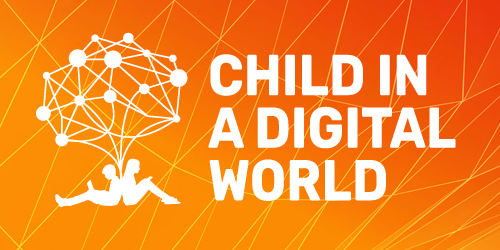
-
An Independent Evaluation of the Psychometric Properties of the Russian Version of the Pediatric Daytime Sleepiness Scale (PDSS)Zakharov, I.M.; Ismatullina, V.I.; Kolyasnikov, P.V.; Marakshina, Yu.A.; Malykh, A.S.; Tabueva, A.O.; Adamovich, T.V.; Lobaskova, M.M.; Malykh, S. B.PDF HTML3021“ CITE
Zakharov, I.M., Ismatullina, V.I., Kolyasnikov, P.V., Marakshina, J.A., Malykh, A.S., Tabueva, A.O., Adamovich, T.V., Lobaskova, M.M., Malykh, S.B. (2023). An Independent Evaluation of the Psychometric Properties of the Russian Version of the Pediatric Daytime Sleepiness Scale (PDSS). Psychology in Russia: State of the Art, 16(3), 206–221. DOI: 10.11621/pir.2023.0314
copied
-
Background. The quality of sleep significantly impacts children’s day-to-day performance, with at least 20% reporting issues with sleepiness. Valid tools for assessing the quality of sleep are needed.
Objective. In this study, we assessed the psychometric properties of the Russian version of the Pediatric Daytime Sleepiness Scale (PDSS). The initial adaptation of the PDSS was conducted on a sample from the Arctic regions of Russia. This location may have influenced the scale's generalizability due to variations in natural daylight across different areas of the country.
Design. To rectify this, we gathered a comprehensive, geographically diverse sample from Russia. This combined dataset comprised 3772 participants between 10 to 18 years of age, from nine different regions of Russia.
Results. We confirmed the unifactorial structure of the PDSS, which showed no regional effects. The psychometric analysis indicated that one item from the 8-item PDSS could be removed, thereby improving the scale's model fit. We also observed gender and age impacts on sleep quality: boys reported fewer sleep-related issues than girls, and younger children reported fewer problems than older children.
Conclusion. This study validates the usefulness and reliability of the Russian version of the PDSS, thereby enhancing its general applicability. Furthermore, we replicated previously reported age and sex effects on the sleep quality of school-aged children.
DOI: 10.11621/pir.2023.0314
Keywords: daytime sleepiness/ adolescents/ sleep-related problems/ sleep duration/ psychometric analysis
-
-
Coping Responses during the COVID-19 Pandemic: A Cross-Cultural Comparison of Russia, Kyrgyzstan, and PeruVoronin, I.A.; Manrique-Millones, D.; Vasin, G.D.; Millones-Rivalles, R.B.; Fernández-Ríos, N.; Marakshina, Yu.A.; Lobaskova, M.M.; Symanyuk, E.E.; Pecherkina, A.A.; Ageeva, I.A.; Lysenkova, I.A.; Ismatullina, V.I.; Sitnikova, M.A.; Malykh, S. B.; Manrique-Pino, O.PDF HTML8453“ CITE
Voronin, I.A., Manrique-Millones, D., Vasin, G.M., Millones-Rivalles, R.B., Manrique-Pino, O., Fernández-Ríos, N., Marakshina, Yu.A., Lobaskova, M.M., Symanyuk, E.E., Pecherkina, A.A., Ageeva, I.A., Lysenkova, I.A., Ismatullina, V.I., Sitnikova, M.A., Malykh, S.B. (2020). Coping Responses during the COVID-19 Pandemic: A Cross-Cultural Comparison of Russia, Kyrgyzstan, and Peru. Psychology in Russia: State of the Art, 13(4), 55-74.
copied
-
Background. The COVID-19 pandemic has subjected people around the world to severe stress, evoking a variety of coping responses. Coping responses can be broadly classified into four strategies: 1) problem-focused coping; 2) emotion-focused coping; 3) socially supported coping; and 4) avoidance. While there is a wide variability of individual coping responses, to some extent they are also culturally specific.
Objective. This study aimed to compare the differences in the prevalence and factor structure of coping responses during COVID-19 pandemic in three countries: Russia, Kyrgyzstan, and Peru.
Design. The sample included 501 participants from Russia, 456 participants from Kyrgyzstan, and 354 participants from Peru. The mean age of participants was 28 years in Russia (SD = 13.5); 24 years in Kyrgyzstan (SD = 10.0); and 30 years in Peru (SD = 12.3). In Russia and Kyrgyzstan, coping strategies were assessed with an abbreviated Russian adaptation of the COPE (Coping Orientations to Problems Experienced) questionnaire. In Peru, coping responses were assessed using the Spanish version of the Brief COPE questionnaire. The average scores from fifteen COPE scales were used as the input data for linear modelling and factor analysis.
Results. The coping scores varied substantially within each country. Differences between countries accounted for 17.7% of the total variability in religious coping; 15.8% in acceptance; 13.9% in mental disengagement; and less than 7% in the other coping strategies. No difference in the prevalence of coping responses was found between Russian and Kyrgyz participants after accounting for age and gender. In all three countries the coping responses were associated with the same four coping domains: problem-focused coping, socially supported coping, avoidance, and emotion-focused coping. Four factors explained up to 44% of the total variation in the COPE scores. Religious coping and mental disengagement were classified into different coping domains in the three countries.
Conclusion. The results suggest that during the COVID-19 pandemic, people from different countries apply the full range of coping responses within the four universal coping strategies. Religious coping and mental disengagement differed the most across the countries, suggesting that some coping behaviors can take on different roles within the system of coping responses to stressful events. We attribute these differences to differing cultural and socioeconomic characteristics, and the different measures taken by governments in response to COVID-19.
DOI: 10.11621/pir.2020.0404
Keywords: coping behavior; coping strategies; COPE; cross-cultural differences; factor structure
-
-
Perception of Family Environment with Russian Adolescent Twins: Possible Genotype-Environment Correlation
-
Gene-environment correlations have been studied in behavior genetics since the beginning of the 1980s, including genetic effect on the perceived family environment; however, the majority of studies have been based on retrospective self-reports. The current study is meant to analyze the sources of variance (complementary genetic factors, shared and non-shared environmental variance) in perceived family environment with Russian adolescent twins. Perception of family environment was measured with the Russian version of Family Environment Scale (Moos & Moos, 1981). The structural equation model in "Mx"(Neale, Boker, Xie, & Maes, 2004) was employed to estimate the influence of genetic and environmental factors on adolescents' self-reports. The environmental variance components are prevalent for most FES scales (6 of 10). The shared environment was significant for 3 primary grades and the Organization factor, the complementary genetic variance was revealed for 2 primary grades and the Expressiveness-Control super-order factor. These results are generally consistent with previously reported moderate heritability of FES scales, although the heritabilities for the Conflict scale and the Structure super-order factor appear to be relatively high. The gene-environment correlation might be a possible explanation for these findings.
DOI: 10.11621/pir.2010.0019
Keywords: perceptions of family environment, environment, genotype, twins, gene-environment correlation, Family Environment Scale, adolescence
-









